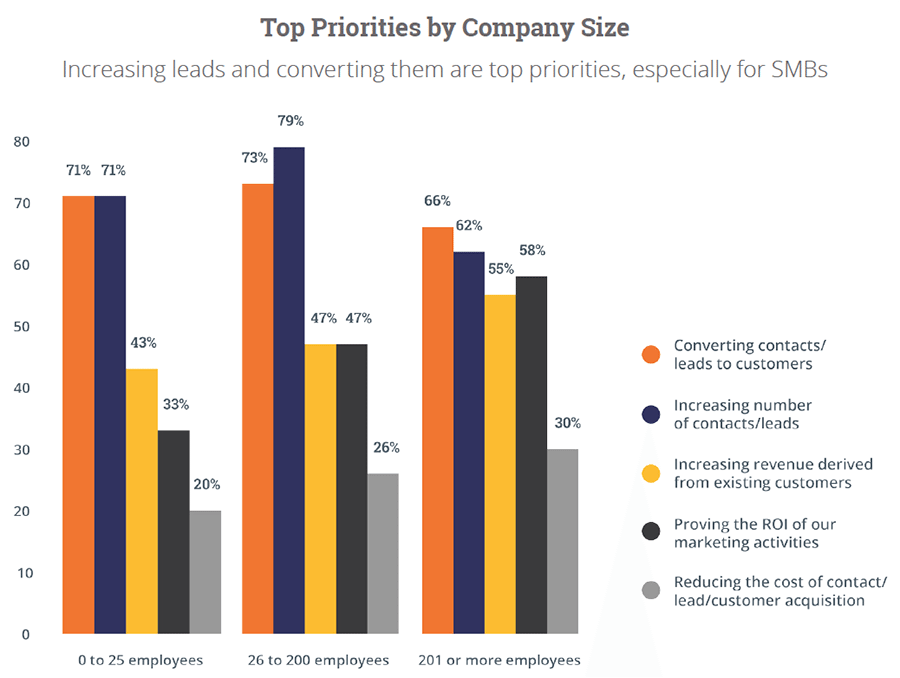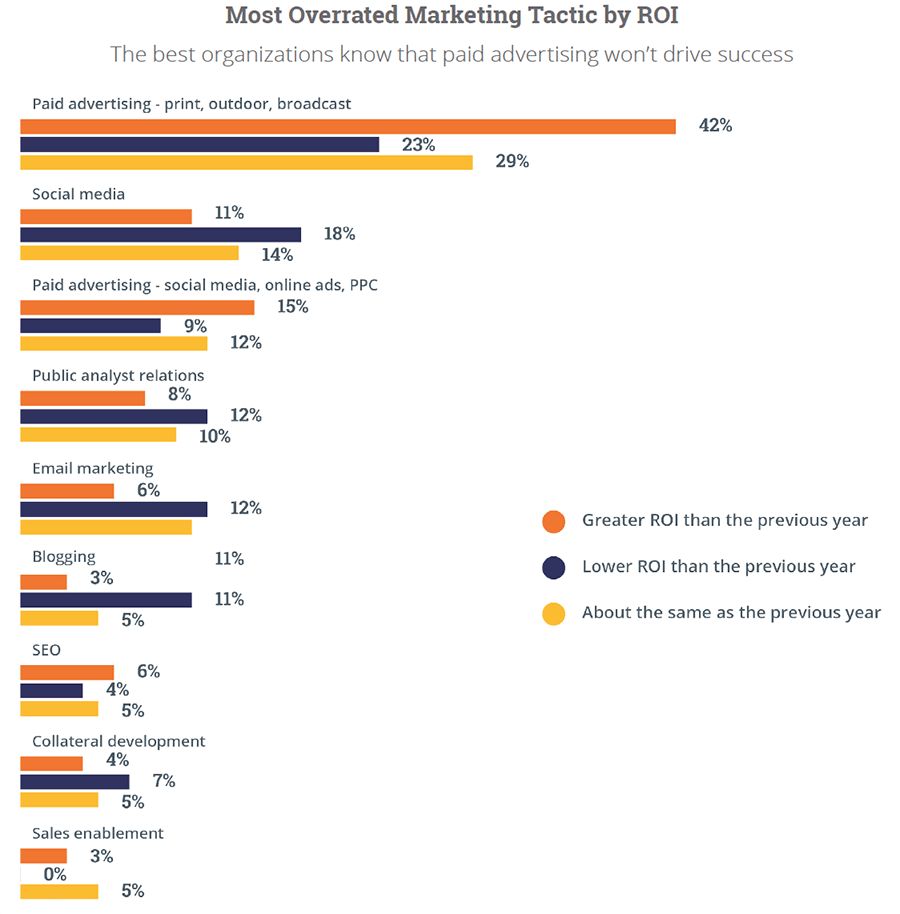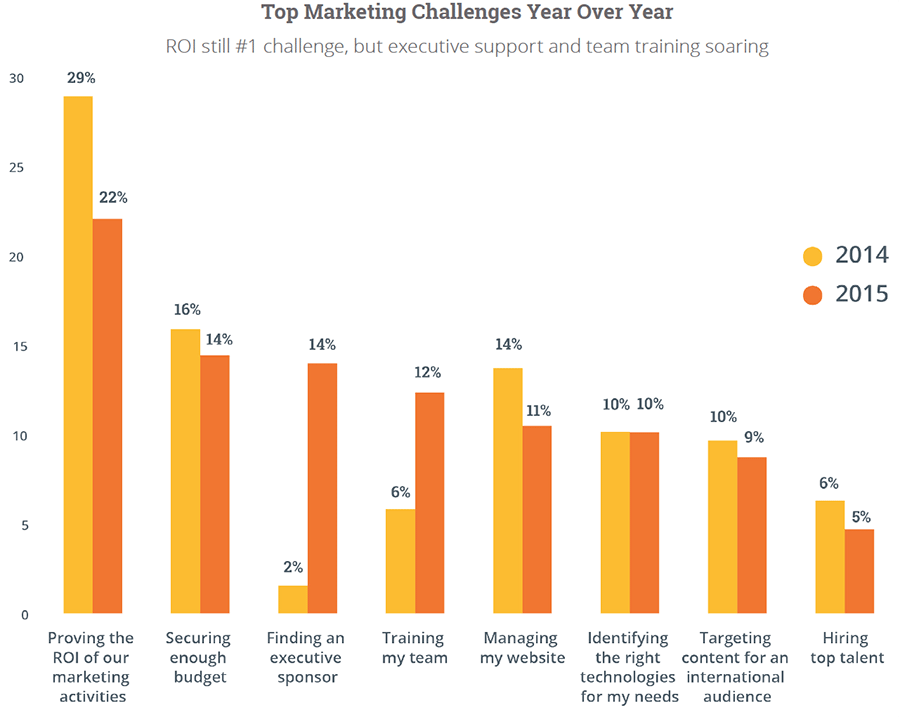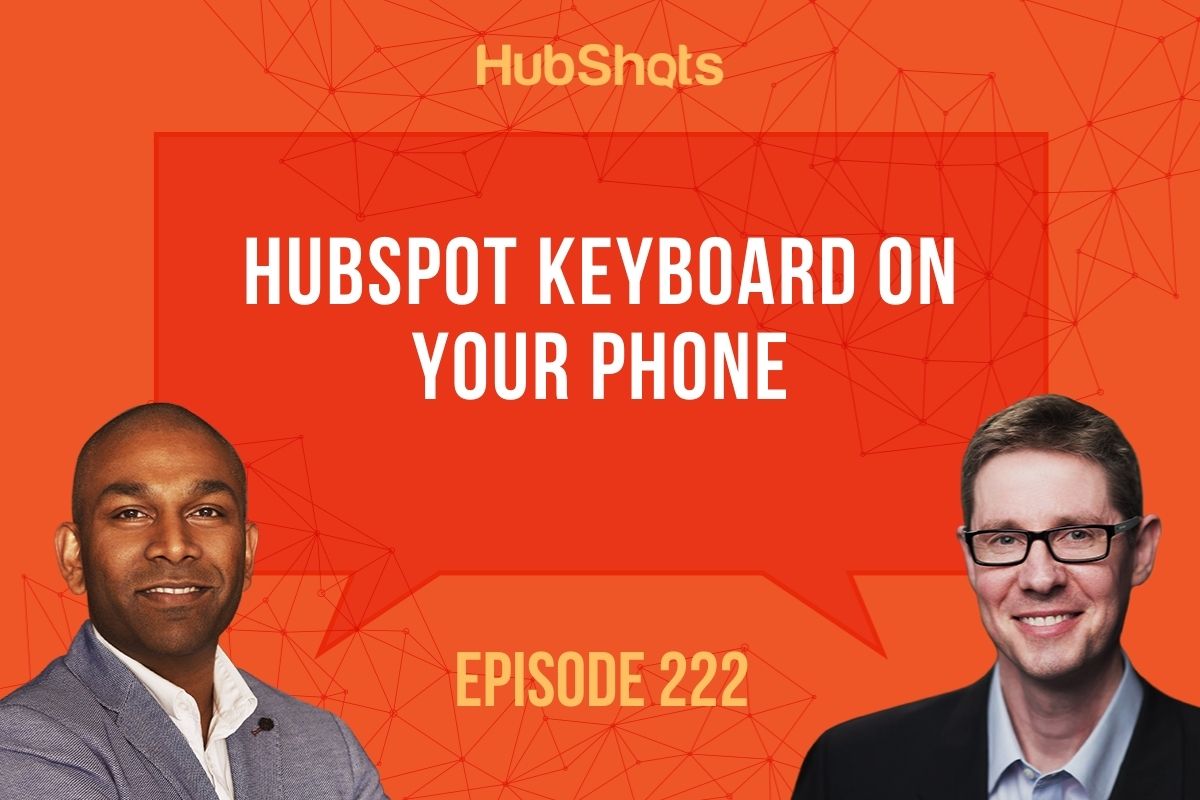What Marketing Managers Can Learn from HubSpot’s State of Inbound 2017 Report
What HubSpot’s State of Inbound Report Means for Marketing Managers At last, the 2017 HubSpot State of Inbound Report has been released, and there’s...
If you're new to HubSpot, we guide you on where to start, how to do it right, and train you to make the most of the platform.
Review your HubSpot portal to uncover issues, spot growth opportunities, and ensure you're maximising its potential.
Unlock business growth with automation and attribution. Implement best practices and execute marketing campaigns.
HubSpot On-Demand
HubSpot Training
HubSpot Websites
HubSpot Campaigns
HubSpot Optimisation
HubSpot have released the 2015 version of their State of Inbound report, and it's an interesting read - you can download it here.
It's a comprehensive report, coming in at 73 pages, so there's plenty to digest. But a few key items stood out for me, which I wanted to cover here.
The report is broken in to two sections, one for Marketing, and one for Sales. This is the second year that HubSpot have expanded to include a section dedicated to sales, and is indicative of the focus that they're putting on the whole sales-marketing alignment (bingo!) approach.
In this post I'm just going to mention a few items related to the marketing section, next week I'll look at some of the sales findings.
The report is based on responses from close to 4000 sales and marketing professionals around the globe and is a useful insight into the priorities and problems they (and we) are facing.
The first thing that struck is the priorities that marketing professionals have. Consider this chart from page 12 of the report:

The top priority for companies is increasing leads and converting lead to customers. No surprises there.
However, way down on the priority list is a focus on reducing cost of acquisition. I find this particularly surprising.
In our agency we manage a lot of paid advertising channels for clients - it's part of the overall mix of driving traffic and content promotion - and as part of that we have key focus on improving (ie reducing) the acquisition costs. Given a budget to manage we aim to get the maximum number of leads we can for that spend.
Although increasing the number of leads is important, it's not uncommon for us to turn off a lead producing campaign because the acquisition costs are too high. We'll channel that budget into other areas, including testing new channels and campaigns.
By the way, it's probably worth covering the debate around mentioning paid advertising as part of a post about Inbound practices. Some will argue that paid advertising (eg AdWords PPC, LinkedIn Ads, Facebook advertising, etc) don't belong in a list of Inbound tactics. We however are firmly in the camp of 'publishing the right content in the right place to the right people at the right time' - regardless of the means ie having the right piece of content promoted to you at the right time via a Facebook ad can be useful and effective, and not interruptive.
However, people do disagree with this approach, and the report highlights this to be a growing trend. On page 26, the report notes that:
"The best organisations know that paid advertising won't drive success"
This however is a little misleading, because when they break down the 'paid advertising' activities, by far the biggest target is on 'print, outdoor and broadcast' paid advertising (and much less on social media and PPC):

It's a little confusing at first, but what this chart is saying is that:
The really important piece here is that the rating is based on ROI (ie not based on gut feel, and other inaccurate measures).
Which brings us to ROI...
When asked what was the biggest problem they faced, marketers were clear that proving ROI was the overwhelming challenge (p19):

Interestingly the % citing it as the main challenge has dropped considerably since last year - perhaps indicating that marketers are getting better at measuring their activities.
Why is proving ROI the biggest challenge? Simply because proving ROI is best way to get increased budget requests approved - and (not surprisingly therefore) securing enough budget came in as the second highest challenge.

When it comes to measuring, there's a definite correlation between checking metrics and improving ROI (p30). The marketers who check their metrics regularly are much more successful.
We all know of course that correlation isn't causation, so it's not as though the act of just looking at numbers somehow magically causes better results :-). Instead it's indicative of the habits of leading marketers - they're constantly checking, analysing, testing and changing strategies and tactics. Test something new, and if it's not working then turn it off sooner rather than later.
Overarching this of course is the need for tools and platforms that allow the tests, campaigns and strategies to be measured accurately. Something that marketing automation platforms (of which HubSpot is a leading provider) all enable. Exciting times.
I'll be covering further items next week when we take a look at the sales part of the report.
Download the State of Inbound Report here.
What HubSpot’s State of Inbound Report Means for Marketing Managers At last, the 2017 HubSpot State of Inbound Report has been released, and there’s...
Companies new and old are focusing on how to market for success in 2017. New and improved marketing trends unfold and content (text, video or...

Welcome to HubShots Episode 222: HubSpot Keyboard on your phone